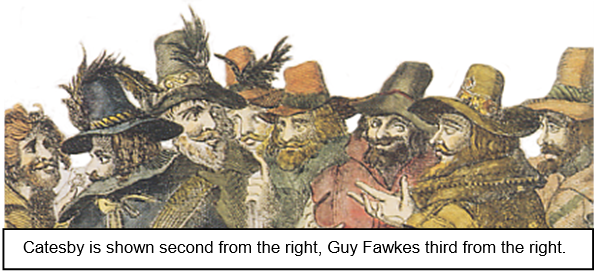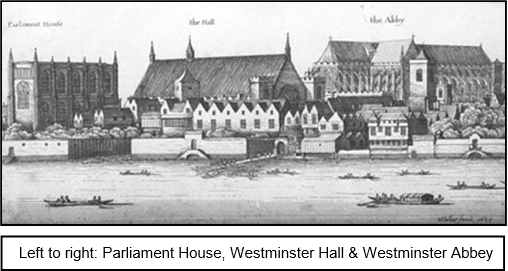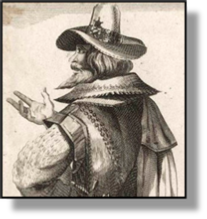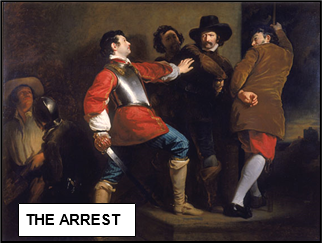


xxxxxThe gunpowder plot, aimed at blowing up the royal family and members of the Lords and Commons, was planned for the opening of Parliament in November 1605. A protest against the oppressive anti-
THE GUNPOWDER PLOT 1605 (J1)
Acknowledgements
Conspirators: engraving (subsequently coloured) by the Dutch artist Crispijn de Passe the Elder (c1565-
 xxxxxThe Catholic conspiracy to blow up King James I, and his wife and eldest son, together with members of both the Lords and the Commons, was planned for the state opening of Parliament on the 5th of November 1605.
xxxxxThe Catholic conspiracy to blow up King James I, and his wife and eldest son, together with members of both the Lords and the Commons, was planned for the state opening of Parliament on the 5th of November 1605.
xxxxxThe plot was formed in protest against the oppressive anti-
xxxxxIn the meantime, however, Catesby, anxious to broaden support for the scheme, increased the number of conspirators. This proved a fatal mistake. One of these newcomers, Francis Tresham, warned his Catholic brother-
 xxxxxThe aim of the plot had been to wipe out king and parliament in one gigantic explosion so that, in the ensuing confusion, the Catholics could seize the reins of government. The result, in fact, was the complete opposite. There were Protestant reprisals against Catholics, and the laws against them were more rigorously enforced. The recusancy law, in particular, which imposed fines on anyone who refused to attend Anglican services, was strenuously applied.
xxxxxThe aim of the plot had been to wipe out king and parliament in one gigantic explosion so that, in the ensuing confusion, the Catholics could seize the reins of government. The result, in fact, was the complete opposite. There were Protestant reprisals against Catholics, and the laws against them were more rigorously enforced. The recusancy law, in particular, which imposed fines on anyone who refused to attend Anglican services, was strenuously applied.
xxxxxIn the wake of their fortunate escape, members of parliament decreed that the 5th of November should be a day of thanksgiving. As a result, Guy Fawkes Day continues to be celebrated with bonfires, fireworks and the burning of a "guy". But, as we shall see, the searching of the vaults before the opening of each new session of parliament was not instituted until the so called Popish Plot of 1678 (C2).
 xxxxxRobert Catesby (1573-
xxxxxRobert Catesby (1573-

xxxxxHad matters been left there, the plot might well have been successful and, in that event, the course of English history would certainly have been changed, for better or worse. But it was at this juncture that Catesby, wanting to broaden the base of the conspiracy, invited support from other committed Catholics, and a hint of the plot fell into the wrong hands. As we have seen, Catesby and his fellow conspirators paid for this breach of confidence with their lives.
xxxxxToday, Guy Fawkes (1570-
xxxxxIt was in April 1604 that Catesby, anxious to enlist a man who was not known to the authorities and who, as a soldier, had a knowledge of explosives, sent one of the conspirators to the Netherlands to see Fawkes. Although not fully aware of the part he was to play in the scheme of things, Fawkes agreed to join the conspiracy and returned to England. The rest is history. It is said that, following his arrest, he was tortured so badly that he hardly had the strength to climb the scaffold which, be it noted, had been erected opposite the Parliament building he came so near to destroying.
Including:
Robert Catesby
and Guy Fawkes

J1-


